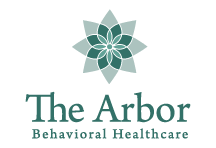Inhaling drugs is nothing new. People often snort prescription medications and illegal drugs or smoke marijuana, cocaine, and methamphetamine. Another type of inhalant is nitrous oxide, or “whip-its.” Instead of being smoked or snorted, whip-its are inhaled through the nose and mouth directly as a gas. Inhaling whip-its can instantly cause a euphoric high, causing many people to use them repeatedly to push the feeling higher for longer. Many people who consistently use whip-its can find relief with substance abuse treatment in Georgetown, Texas.
If you or a loved one struggles to stop using whip-its, there is no better time to find help than now. The team at The Arbor can help break the cycle of addiction and help you find relief from the grips of nitrous oxide. Our luxury environment is a distraction-free, upscale option to begin the road to recovery. Call 844.413.2690 today to develop your treatment plan.
What Are Whip-Its?
Whip-its are small canisters of nitrous oxide that people use to get high. Also known as “laughing gas,” nitrous oxide is a colorless, odorless gas that dentists and doctors have used for years as a form of anesthesia. When inhaled, it creates a dreamy, lightheaded feeling. It is this feeling that people seek when they use whip-its recreationally.
Nitrous oxide is widely available for use in whipped cream containers. The small canisters are easily portable and can be stored without detection. Whip-its are also relatively inexpensive, making them appealing to people of all ages.
People typically inhale whip-its through a balloon or a paper bag. They will then exhale the gas and experience an immediate high. The effects of nitrous oxide are short-lived, typically lasting only a few minutes. For this reason, people often use whip-its in succession to prolong the high.
Risks of Using Whip-Its
While nitrous oxide is not highly addictive, it can lead to dangerous side effects, including:
- Loss of motor control
- Nausea and vomiting
- Dizziness and lightheadedness
- Auditory and visual hallucinations
- Muscle weakness
- Difficulty breathing
Even though whip-its are not highly addictive, people may also turn to other drugs to intensify the high. This additional substance use can lead to polydrug abuse and an increased risk of overdose.
Signs of Whip-Its Abuse
If you’re concerned that someone you love is abusing whip-its, look for the following signs and symptoms:
- Sores or burns around the mouth or nose
- Disorientation
- Laughing for no reason
- Slurred speech
- Nausea and vomiting
- Dizziness
- Unusual behavior or mood swings
Abusing whip-its can cause social and occupational problems as well. Families, friends, and work performance can all be affected when someone abuses whip-its. Recognizing the signs can help them get help to break the cycle of abuse quickly.
Whip-Its Addiction Treatment at The Arbor
If you’re ready to get help for whip-its addiction, know that you are not alone. The Arbor is here to support you through every step of the recovery process. We offer evidence-based treatments and therapies that are successful in treating addiction.
When you come to The Arbor, you will work with a team of highly trained addiction specialists. This team will develop a treatment plan tailored specifically for you and your needs. We understand that everyone’s journey to recovery is different, so we make sure to create an individualized plan that will give you the best chance at success.
Some of the evidence-based treatments and therapies we offer include:
Cognitive-Behavioral Therapy
Cognitive-behavioral therapy (CBT) is a form of psychotherapy that focuses on identifying and changing negative thinking patterns and behaviors to promote positive mental health.
Dialectical Behavior Therapy
Dialectical behavior therapy (DBT) is a type of therapy that combines elements of CBT with mindfulness practices, helping individuals develop skills to manage intense emotions and improve relationships.
Group Therapy
Group therapy involves a therapist leading a group of individuals with similar concerns or goals, providing a supportive and collaborative environment for sharing experiences and learning from one another.
Individual Therapy
Individual therapy, also known as one-on-one therapy, involves a client working directly with a therapist to address personal challenges and develop coping strategies tailored to their specific needs.
Family Therapy
Family therapy involves working with the entire family unit to improve communication, resolve conflicts, and strengthen relationships, recognizing that family dynamics play a crucial role in an individual’s well-being.
Dual Diagnosis Treatment
Dual diagnosis treatment refers to a specialized approach that addresses both mental health disorders and substance abuse issues simultaneously, recognizing the interconnectedness of these challenges and the need for integrated care.
Get the Help You Need Today
You aren’t alone in your fight against addiction. The Arbor is here to help you every step of the way. Call us today at 844.413.2690 to get started on your journey to recovery.


